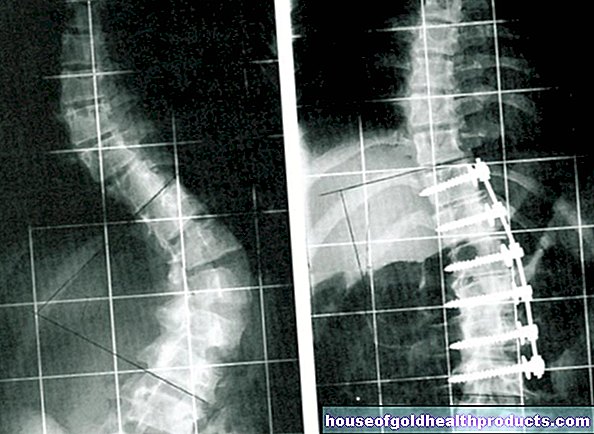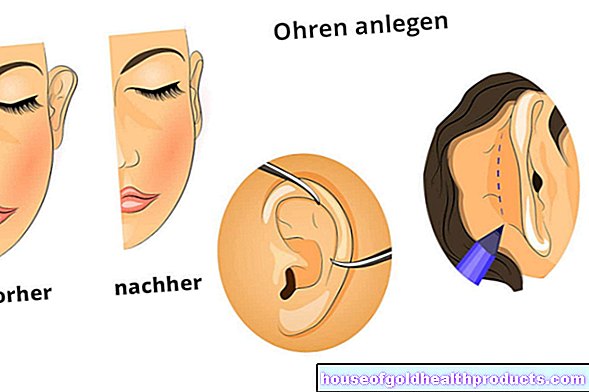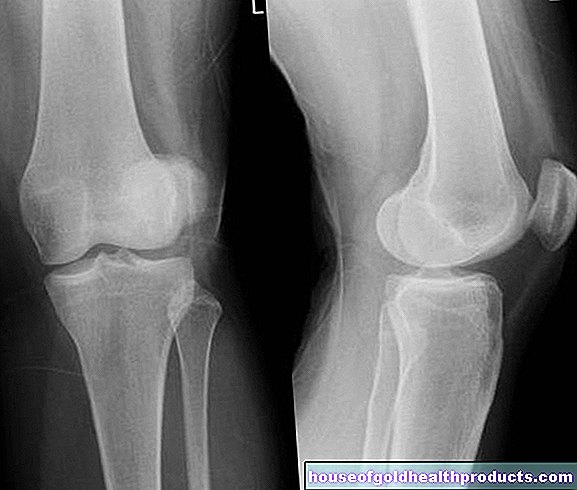U3 examination
Updated on All content is checked by medical journalists.The U3 examination is often the first preventive medical check-up that takes place at the pediatrician and not in the hospital. With her, the doctor will check whether the child has developed normally in the first few weeks after the birth. Read here when U3 examinations take place, how they work and which vaccinations are recommended.

What is the U3 examination?
The U3 examination is one of twelve preventive medical examinations for children. It is carried out between the 3rd and 8th week of life. The health insurance company bears the costs for this. The first vaccination of the child should also be given during the U3 examination.
What is being done at the U3?
Since it is often the first time that the pediatrician sees the baby, he first gets an overview of the general condition of the child. He hears heart and lungs as well as intestinal noises, palpates the abdominal wall and examines the navel. It is also important to check whether the child is already reacting to speech or movements. The pediatrician also checks innate reflexes, for example the grasping reflex or the sucking reflex.
In addition, it is tested whether the child reacts to loud noises and bright light. Other playful tests are used to check the child's interaction, for example whether they are following an object with their eyes.
The doctor also gets an idea of the baby's motor skills, for example whether it can hold its head in a floating prone position for a few seconds. Or whether it already opens its hands every now and then.
A special, but harmless and completely painless test in the U3 examination is the ultrasound of the hip joint. It can be used to detect malformations and misalignments of the hip joint.
As with the U1 and U2 examinations, the child receives vitamin K drops to strengthen the coagulation function and prevent bleeding. As with all other preventive medical checkups, the child is also weighed and measured.
U3: vaccination
The pediatrician informs the parents about the first vaccinations during the U3 examination: According to the recommendation of the Standing Vaccination Commission (STIKO), vaccination against rotaviruses can be given from the age of six weeks. The baby is not given an injection because it is an oral vaccination. For the second month of life, doctors recommend vaccinations against:
- diphtheria
- tetanus
- Whooping cough (pertussis)
- Haemophilus influenzae type b (pathogen including an inflammation of the epiglottis, called epiglottitis)
- Polio
- Hepatitis B.
These can now be given as a combination vaccination in a syringe in the thigh, which is of course gentler on the child. There is also another vaccination against pneumococci.
What is the significance of the U3 examination?
The U3 examination is of particular importance: With it, the treating pediatrician gets an impression of the child for the first time in the doctor's office. Therefore, the U3 is often a bit more extensive. Not only will the child be physically examined, but the doctor will also ask the parents about the child's behavior: Does he sleep well? Does it cry a lot? How is the diet? There may be a lot of questions at the beginning, but they all help the doctor to provide the best possible care for the child. If necessary, the pediatrician can also give recommendations on how to handle the child during the U3 examination.
If the U3 examination reveals a malformation of the hip (congenital hip dysplasia), this can often be successfully treated with wide swaddles or special spreading pants. Consequential damage is usually not to be expected.
Tags: Diseases menshealth dental care





























